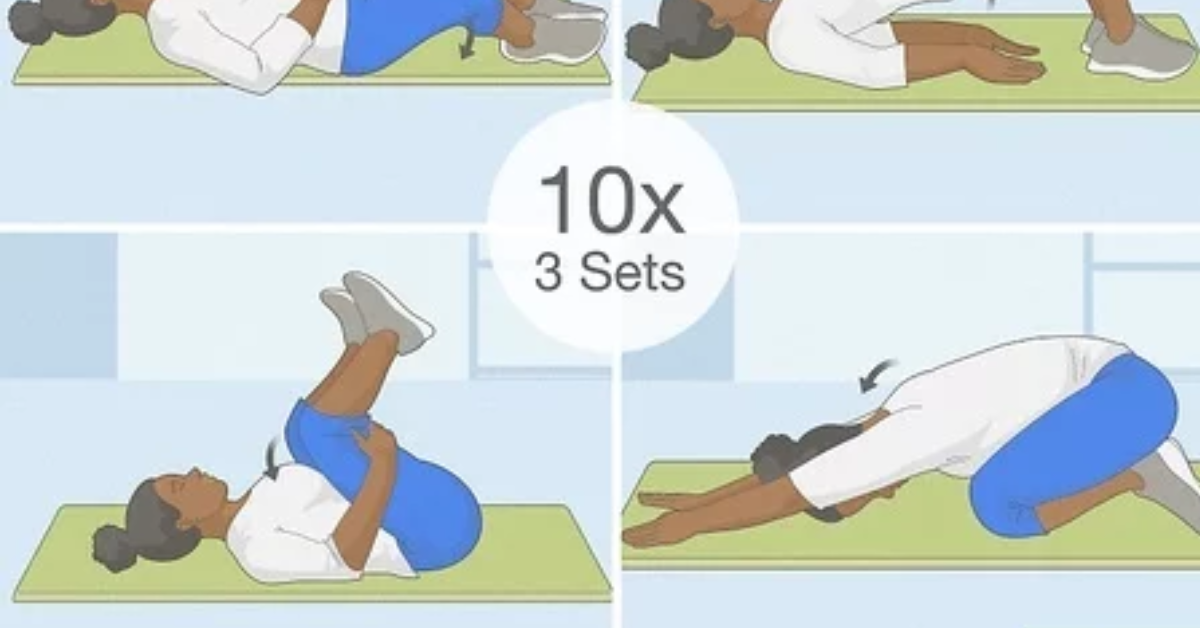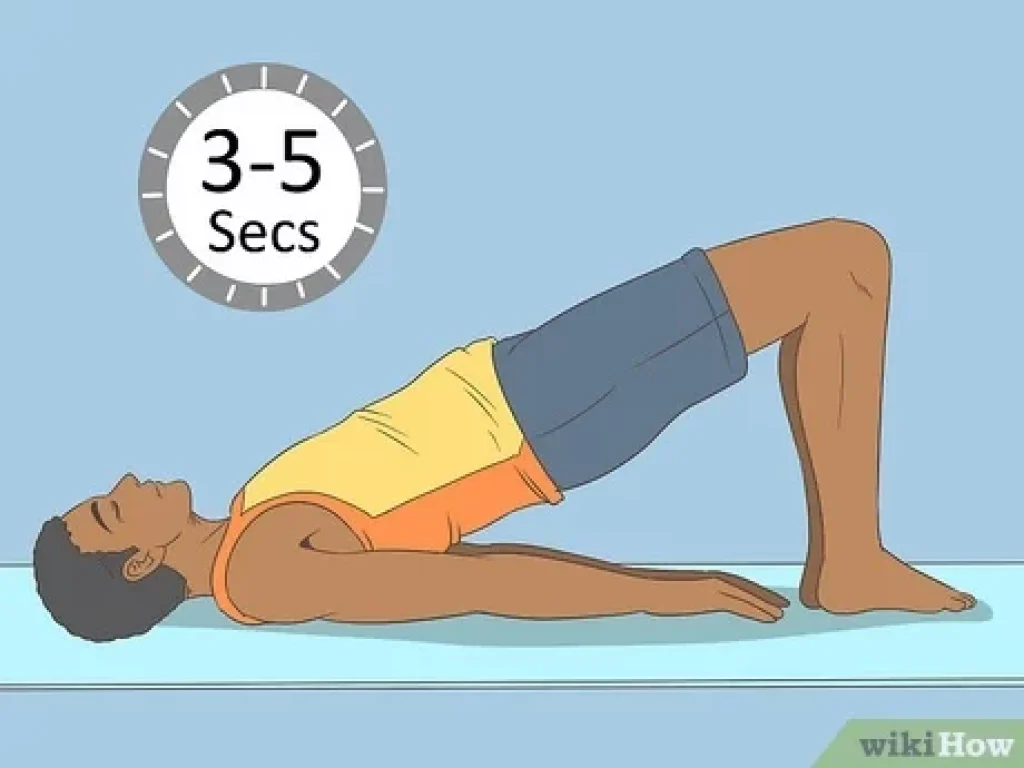
Reverse Kegel exercises are an important part of maintaining pelvic floor health. In this post, we answer 20 frequently asked questions about Reverse Kegel, helping you understand the benefits and how to do them correctly.
1. What is a Reverse Kegel?
- It is an exercise that focuses on relaxing and lengthening the pelvic floor muscles, as opposed to traditional Kegel exercises, which focus on contracting and tightening these muscles.
2. Why should you do Reverse Kegels?
- Help improve the flexibility of the pelvic floor muscles, reduce tension, alleviate pelvic pain, and support issues like premature ejaculation and muscle tightness.
3. What are the benefits of Reverse Kegels for men?
- Help men gain better control during sexual activities, improve control over ejaculation, and reduce tension in the pelvic floor muscles.
4. What are the benefits of Reverse Kegels for women?
- For women, Reverse Kegels help relax the pelvic floor, alleviate discomfort during intercourse, and enhance overall comfort in daily activities.
5. Who should do Reverse Kegels?
- Anyone experiencing tightness in their pelvic floor muscles or seeking to improve their pelvic health can benefit from it, including both men and women.
6. How do you perform a Reverse Kegel correctly?
- Sit or lie down in a comfortable position, take a deep breath, and focus on the sensation of your pelvic area expanding as you inhale. Concentrate on releasing tension in the pelvic floor muscles rather than contracting them.
7. How many times a day should you do Reverse Kegels?
- You can perform 5-10 times a day, holding the relaxed state for about 5-10 seconds each time.
8. Can Reverse Kegels be combined with traditional Kegels?
- Yes, combining both types of exercises helps maintain the strength and flexibility of the pelvic floor, providing better balance.
9. Do Reverse Kegels help with premature ejaculation?
- Yes, it can help men relax the pelvic floor muscles, allowing them to prolong sexual activity and gain better control over ejaculation.
10. How do you know if you are doing Reverse Kegels correctly?
- If you feel a gentle release or relaxation in your pelvic area without any tension or pressure, it means you are doing it correctly.
11. What should you be aware of when doing Reverse Kegels?
- Avoid tightening your abdominal, thigh, or gluteal muscles. Focus only on relaxing the pelvic floor and avoid pushing too hard.
12. How long does it take to see results?
- It usually takes about 2-4 weeks of consistent practice to notice improvements in pelvic floor comfort and flexibility.
13. Can Reverse Kegels relieve pelvic pain?
- Yes, they are effective in relieving pain caused by pelvic floor tightness, especially helpful for those with chronic discomfort in this area.
14. When is the best time to do?
- You can do Reverse Kegels anytime you feel comfortable, such as in the morning, before bed, or while relaxing.
15. Are there any side effects if you do Reverse Kegels incorrectly?
- If done too forcefully or improperly, you might feel pressure or tension in your bladder. Remember to keep it gentle and focus on relaxation.
16. How do you perform a Reverse Kegel without feeling the need to pee?
- Focus on deep breathing and fully relaxing your body. Avoid pushing too hard and keep the exercise gentle and natural.
17. Do you need any equipment to do?
- No, They do not require any special equipment; they only require focus on relaxing the pelvic floor muscles.
18. Do Reverse Kegels improve sexual health?
- Yes, these exercises help increase flexibility and control of the pelvic floor muscles, leading to improved sexual experiences.
19. Are there any variations of Reverse Kegels?
- They can be performed in different positions like lying down, sitting, or standing to find what works best for you.
20. Are they suitable for pregnant women?
- Can be suitable for pregnant women if done correctly and without causing discomfort. However, it’s always best to consult a doctor before starting any new exercise during pregnancy.
21. Can they help with urinary incontinence?
- Yes, by improving the relaxation and flexibility of the pelvic floor, they can help reduce tension and improve control over bladder functions.
22. How do Reverse Kegels affect bowel movements?
- Can help relax the pelvic floor muscles, making it easier to pass stool and reduce the discomfort during bowel movements.
23. Can Reverse Kegels help with pelvic floor dysfunction?
- Yes, They can be beneficial in managing pelvic floor dysfunction, especially for those who experience tightness or hypertonicity in their pelvic muscles.
24. Should I do Reverse Kegels if I experience pelvic floor tightness?
- Definitely. They are specifically aimed at helping to reduce tightness and tension in the pelvic floor muscles.
25. What is the difference between a Reverse Kegel and deep breathing exercises?
- While both involve deep breathing, a Reverse Kegel focuses specifically on relaxing the pelvic floor muscles during the breath, rather than just general relaxation.
26. How do Reverse Kegels improve blood flow to the pelvic region?
- By relaxing the pelvic floor, they enhance circulation and promote better blood flow to the pelvic region, which can aid in healing and overall function.
27. Can Reverse Kegels help with pain during intercourse?
- Yes, by relaxing the pelvic floor muscles, they can help reduce pain or discomfort during intercourse, especially for those who experience tightness.
28. How can I integrate Reverse Kegels into my daily routine?
- You can incorporate them into your daily routine by doing them during activities like brushing your teeth, while sitting at your desk, or during your relaxation time before bed.
29. Are Reverse Kegels effective for men with prostate issues?
- May help men with prostate issues by reducing tension in the pelvic floor and improving comfort during urination.
30. Can athletes benefit from doing Kegel?
- Yes, athletes can benefit as they help maintain pelvic flexibility and reduce the risk of muscle tightness or injury in the pelvic area.
What other exercises complement Reverse Kegels?
Several exercises can complement Reverse Kegels to help improve pelvic floor flexibility, strength, and overall pelvic health. These exercises, when done alongside Reverse Kegels, can create a balanced approach to managing pelvic tension and enhancing strength. Here are some of the most effective ones:
1. Traditional Kegels
- What it is: Unlike Reverse Kegels, traditional Kegels involve contracting and lifting the pelvic floor muscles.
- How it complements: Traditional Kegels help build strength in the pelvic floor, while Reverse Kegels focus on relaxation. Using both exercises together helps maintain balance and control over your pelvic muscles.
- How to do it: Tighten the muscles you would use to stop urination, hold for 5 seconds, then release. Repeat 10-15 times.
2. Pelvic Tilts
- What it is: This exercise helps gently move the pelvis and engage the lower abdominal muscles.
- How it complements: Pelvic tilts can help increase mobility and reduce tension in the lower back and pelvic area, making it easier to relax the pelvic floor.
- How to do it: Lie on your back with your knees bent and feet flat on the floor. Flatten your back against the floor by tilting your pelvis upward and tightening your abs. Hold for a few seconds, then release. Repeat 10-15 times.

3. Child’s Pose (Balasana)
- What it is: A gentle yoga stretch that helps lengthen the spine and relax the hips and lower back.
- How it complements: Child’s Pose helps to release tension in the pelvic region and lower back, supporting the relaxation that Reverse Kegels aim to achieve.
- How to do it: Kneel on the floor, bring your big toes together, and sit back on your heels. Stretch your arms forward and lower your torso toward the ground, resting your forehead on the floor. Hold for 30 seconds to a minute.
4. Deep Squats
- What it is: This involves lowering into a deep squat, with feet flat on the floor.
- How it complements: Deep squats naturally open up the hips and help stretch the pelvic floor muscles, promoting relaxation similar to a Reverse Kegel.
- How to do it: Stand with your feet shoulder-width apart and lower into a deep squat, keeping your heels on the ground. Hold this position for 20-30 seconds, focusing on relaxing your pelvic floor as you breathe.
5. Happy Baby Pose (Ananda Balasana)
- What it is: A yoga pose that opens the hips and stretches the inner thighs.
- How it complements: Happy Baby Pose helps release tension in the pelvic floor and hips, which supports the relaxation work done in Reverse Kegels.
- How to do it: Lie on your back, bend your knees toward your chest, and hold the outer edges of your feet with your hands. Gently pull your knees toward the floor while keeping your back flat. Hold for 30-60 seconds.
6. Butterfly Stretch
- What it is: A seated stretch that focuses on opening the inner thighs and groin area.
- How it complements: This stretch targets the inner thighs and helps to open up the pelvis, aiding in the relaxation of the pelvic floor.
- How to do it: Sit with your feet together and your knees bent out to the sides. Hold your feet with your hands and gently press your knees toward the ground. Hold for 30-60 seconds while breathing deeply.
7. Cat-Cow Stretch
- What it is: A dynamic yoga movement that stretches the spine and engages the core.
- How it complements: Cat-Cow helps improve mobility in the spine and pelvis, which can assist in releasing tension in the pelvic area and help with the coordination of pelvic floor movements.
- How to do it: Start on your hands and knees in a tabletop position. Arch your back (Cow pose) and lift your head and tailbone toward the ceiling, then round your back (Cat pose) by tucking your chin to your chest. Repeat 10-15 times.
8. Diaphragmatic Breathing
- What it is: A breathing technique that involves deep breaths, expanding the diaphragm.
- How it complements: Diaphragmatic breathing helps engage and relax the core and pelvic floor muscles, making it an excellent practice alongside Reverse Kegels.
- How to do it: Sit or lie down comfortably, place one hand on your chest and the other on your belly. Inhale deeply through your nose, allowing your belly to rise, then exhale slowly. Focus on expanding and relaxing the lower abdomen and pelvic area.
9. Hip Bridges
- What it is: An exercise that strengthens the glutes and lower back.
- How it complements: Hip bridges help engage the pelvic floor in a controlled way, strengthening the supporting muscles around the pelvis.
- How to do it: Lie on your back with your knees bent and feet flat on the floor. Lift your hips toward the ceiling while squeezing your glutes, then slowly lower back down. Repeat 10-15 times.
10. Hip Flexor Stretches
- What it is: A stretch that targets the muscles in the front of the hips.
- How it complements: Relaxed hip flexors can help reduce pelvic floor tension, supporting the relaxation focus of Reverse Kegels.
- How to do it: Kneel on one knee with the other foot in front, creating a 90-degree angle. Lean forward slightly while keeping your back straight, feeling a stretch in the front of your hip. Hold for 20-30 seconds on each side.
How Reverse Kegels and Vibrating Panties Helped Me Reclaim My Life
A few months ago, I found myself struggling with a constant, uncomfortable tightness in my lower abdomen. It wasn’t just a minor issue—it made sitting at my desk painful, and it even started to affect my sleep and my confidence in intimate moments. I felt like I was losing control of my own body, and it began to impact my relationship as well. One night, I stumbled upon a post about Reverse Kegels and decided to give it a try.
At the same time, I had recently come across vibrating panties, a product I thought might add a playful element to my relationship while I worked on improving my pelvic health. I didn’t expect these two things to have much in common, but they ended up making a huge difference together.
Starting with Reverse Kegels, I would spend a few minutes each day focusing on releasing the tension in my pelvic floor while breathing deeply. It felt awkward at first, but after about two weeks, I started noticing a real difference. The tightness in my abdomen wasn’t as intense, and I felt a bit more in tune with my body.
Then, when I introduced vibrating panties into the mix, it wasn’t just about spicing up our intimacy. Using them helped me become more aware of my pelvic floor and how it reacted to different sensations. It encouraged me to stay mindful of my body’s responses, making it easier to relax and engage in the Reverse Kegels even when I wasn’t consciously practicing.
The combination of these small, mindful changes made a big impact. Within a month, the tightness that had plagued me for so long was nearly gone. I felt more comfortable in my own skin, more confident with my partner, and even looked forward to those moments of relaxation and play. It wasn’t just about regaining physical comfort—it was about finding a new way to connect with myself and my partner.
Reverse Kegels and the unexpected addition of vibrating panties helped me take back control over my body, and they became part of a routine that made me feel more empowered than ever before.
Conclusion
Reverse Kegel exercises are simple yet effective for improving pelvic health. We hope this Q&A has helped you understand how to perform them correctly and reap the full benefits.







